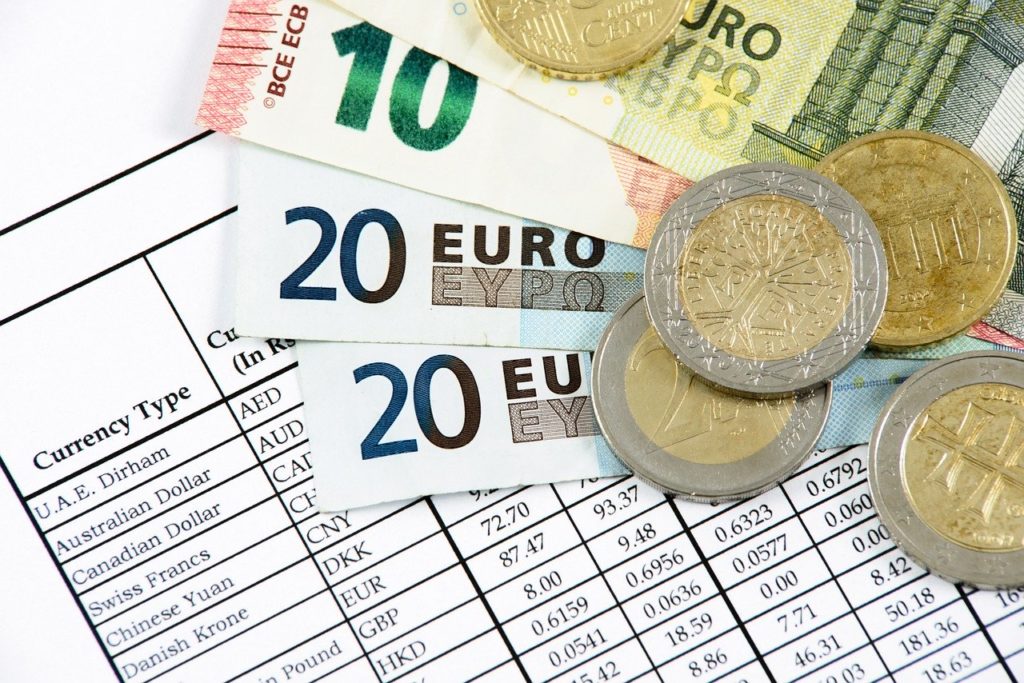¿Sabes si tu precio de exportación te deja beneficios… o estás vendiendo al extranjero para perder dinero?
Generalmente, muchos emprendedores fijan precios para exportar basándose en intuiciones o en el mercado local, ¡gran error! Sin embargo, fijar el precio internacional correcto puede marcar la diferencia entre crecer globalmente o arruinar tu rentabilidad. Así que, aquí aprenderás cómo calcularlo paso a paso, evitar errores típicos y adaptar tu oferta a cada mercado.
“Quien vende barato para entrar, acaba saliendo caro.”
📌 ¿Qué es el precio internacional y por qué es clave?
Principalmente, el precio internacional es aquel que defines para vender tu producto o servicio en el extranjero. Asimismo, aunque pueda parecer simple, en realidad es una de las decisiones estratégicas más complejas al exportar.
No se trata únicamente de convertir el precio local a otra divisa. Debes contemplar:
- Costes de transporte y logística.
- Embalaje especial para exportación.
- Comisiones de agentes, plataformas o distribuidores.
- Aranceles e impuestos del país destino.
- Riesgos por variaciones del tipo de cambio.
- Percepción de valor en ese mercado.
👉 Si vendes barato, puedes destruir tus márgenes.
👉 Si vendes caro, puedes quedar fuera del mercado.
Por eso, fijar correctamente tu precio internacional puede ser la diferencia entre una expansión exitosa… o un gran tropiezo económico.
✅ Pasos prácticos para fijar tu precio internacional
Por lo tanto, vamos a ver, paso a paso, cómo puedes definir el mejor precio para cada mercado exterior. ¡Toma nota!
-
Calcula tu coste real de exportación
No cometas el error de usar el mismo coste que en tu mercado local. Exportar implica costes adicionales que debes prever.
-
- Incluye:
- Producción.
- Embalaje especial.
- Transporte internacional.
- Seguros.
- Trámites aduaneros.
- Comisiones de plataformas.
- Fluctuaciones del tipo de cambio.
- Incluye:
💡 Usa una hoja de cálculo y asegúrate de no dejar ningún coste fuera.
-
Investiga el mercado destino
A continuación, debes conocer a fondo el país donde vas a vender. ¿Qué precios manejan tus competidores? ¿Cuál es el poder adquisitivo? ¿Qué valor aporta tu producto allí?
-
- Busca en:
- Marketplaces como Amazon, MercadoLibre o Alibaba.
- Webs de distribuidores locales.
- Informes de cámaras de comercio.
- Clientes potenciales a través de entrevistas o encuestas.
- Busca en:
👁️ Recuerda: el mismo producto puede tener percepciones de valor muy distintas según el país.
-
Define tu estrategia de posicionamiento
Una vez tengas información del mercado, decide cómo quieres posicionarte:
-
- ¿Premium? Precio alto + percepción de valor + exclusividad.
- ¿Calidad-precio? Precio medio con buena propuesta de valor.
- ¿Económico? Precio más bajo, ideal para volumen.
🎯 Tu precio comunica más que cifras: transmite el nivel de tu marca, tu calidad, tu intención.
-
Ajusta según canales de venta y volúmenes
No es lo mismo vender:
-
- A través de e-commerce propio.
- En retail (tiendas físicas).
- A un mayorista o distribuidor.
Además, el volumen influye. A más unidades, mayores descuentos puedes ofrecer sin perder rentabilidad.
⚠️ OJO: Ajusta tus precios sin perder tu margen mínimo vital. ¡Haz siempre tus números!
-
Deja margen para negociación y promociones
En exportación, negociar es parte del juego. Necesitas espacio para:
-
- Ofrecer descuentos por volumen.
- Aplicar promociones de lanzamiento.
- Negociar con distribuidores sin afectar tu margen.
👉 Añade un margen de seguridad del 10–20 % sobre tu coste total antes de fijar tu precio final.
-
Haz pruebas reales (Test A/B)
Antes de tomar decisiones definitivas, lanza pruebas:
-
- En marketplaces con precios distintos.
- A distribuidores con propuestas personalizadas.
- En tu web para medir tasa de conversión.
🔁 Ajusta en función de los resultados. El mercado es el juez final.
❌ Errores comunes que debes evitar en el precio internacional
Sin embargo, aunque ya conoces los pasos, estos son los errores más peligrosos y frecuentes:
- Convertir directamente el precio local a la moneda extranjera.
- Olvidar los costes adicionales que surgen al exportar.
- Pensar que “más barato = más ventas”.
- Usar un solo precio para todos los países.
- No tener en cuenta el tipo de cambio (especialmente en LATAM).
💡 Recuerda: el precio debe construirse de abajo arriba, desde los costes reales hasta la percepción de valor, no al revés.
🧠 Reflexiona antes de actuar en el precio internacional
Asimismo, detente unos minutos y responde con sinceridad:
- ¿He incluido todos los costes en mi cálculo?
- ¿Mi producto se percibe igual en cada país?
- ¿Estoy dispuesto a negociar sin perder dinero?
- ¿Cuánto margen necesito realmente para crecer?
🧘♂️ Esta reflexión previa puede ahorrarte muchos disgustos (¡y euros!) después.
📆 Cómo planificar sin agobios el precio internacional
Ya que, sabemos que calcular precios internacionales puede parecer abrumador. Por eso, te propongo una planificación práctica:
- Empieza por un solo país donde tengas más potencial.
- Documenta tus costes de forma clara y completa.
- Crea rangos de precios, no un precio único.
- Lanza test de validación en pequeña escala.
- Itera cada 2–3 meses, ajustando según resultados.
🧠 Consejo: usa un Excel vivo, actualizado cada trimestre, que incluya escenarios y previsiones. ¡Tu negocio te lo agradecerá!
🤖 Cómo usar la Inteligencia Artificial para fijar el precio internacional
Finalmente, la IA puede convertirse en tu aliada estratégica. Por lo que, te ayuda a calcular, analizar y simular. Así que, aquí tienes ejemplos de cómo usarla:
- Para generar escenarios de precio en función de tus inputs.
- Para automatizar cálculos y simulaciones.
🧠 Prompt recomendado: “Simula el precio internacional de mi producto incluyendo transporte, aranceles, tipo de cambio y margen objetivo del 30 %”
También puedes usar IA para redactar emails de negociación o para adaptar descripciones según mercado.
🤝 Enlaces internos
👩💼 Caso de éxito mentorDay
María, fundó una marca de cosmética natural en Colombia. Al entrar al programa de aceleración de mentorDay, no sabía cómo fijar precios para exportar a Europa. En los talleres con expertos, descubrió que sus precios eran demasiado bajos y no cubrían los costes logísticos.
Gracias al acompañamiento, rediseñó su estrategia, aplicó lo aprendido en esta TIP, hizo entregables de pricing y presentó su propuesta a distribuidores en Francia. Hoy vende con márgenes sanos y posicionamiento premium.
👉 Tú también puedes lograrlo inscribiéndote hoy mismo al programa gratuito.
❓ FAQ (Preguntas frecuentes)
¿Puedo usar el mismo precio en todos los países?
-
No. Cada país tiene condiciones de mercado y costes distintos.
¿Cómo sé si mi precio internacional es competitivo?
- Analiza precios de la competencia y haz pruebas en el mercado destino.
¿Debo incluir comisiones de plataformas al fijar el precio?
-
¡Sí! No hacerlo es uno de los errores más comunes.
¿Qué pasa si el tipo de cambio varía mucho?
-
Crea colchones o utiliza estrategias como precios en divisa fuerte.









[…] ¿Cuál es tu estrategia de PRECIO? Esta estrategia, que puede contemplar diferencias por mercados, debe elaborarse a partir de diferentes elementos: los costes de la empresa, los precios en los mercados internacionales de productos similares ofrecidos por competidores. También hay que considerar un margen para contingencias, el margen de beneficios y, lógicamente, un margen de negociación (este es el típico aspecto en el que puede haber variaciones significativas entre unos y otros mercados, con diferentes culturas de negociación y “regateo”). (ver TIP) […]